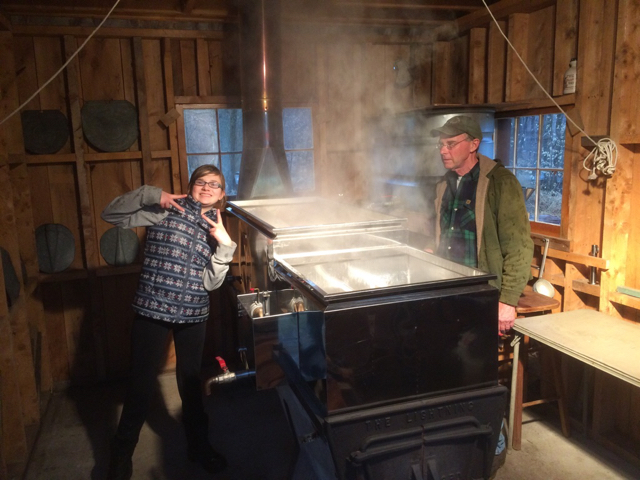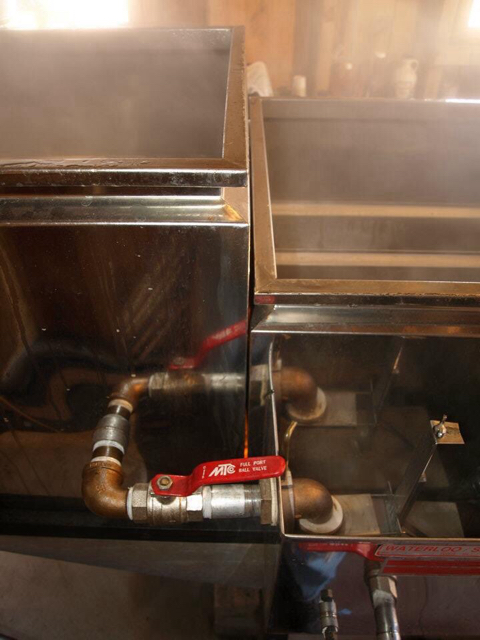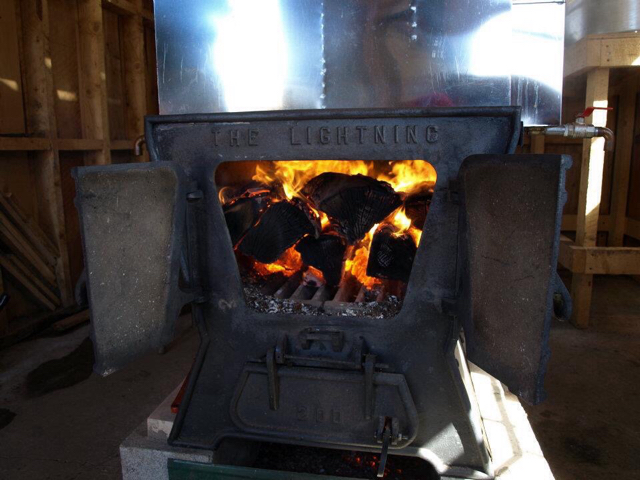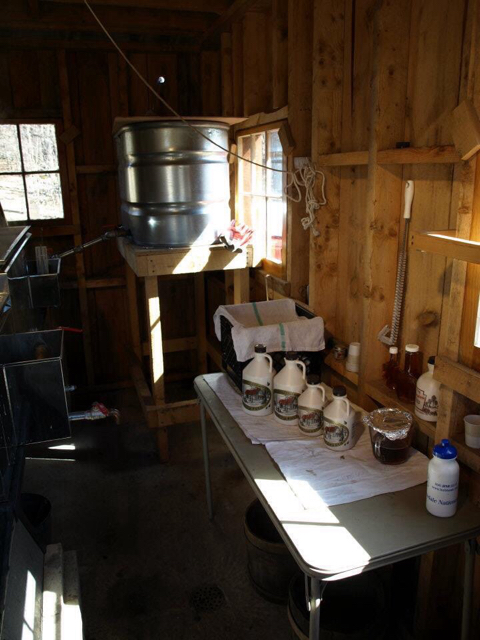I love real Maple Syrup, and maple sugar candy. Seeing the process is interesting and I can see that it's lots of work.
For those of you who don't live in "Sugarin" country, here is a brief explanation of the process of making maple syrup:
All maple species produce the sweet sap which is used in the sugar-making process. Sugar Maples generally have the highest levels of sugar so those are what we like to tap. If you don't have sugar maples you can still tap Red or Silver maples. You will just have to evaporate a little more sap. On average, it takes 40 gallons of sap to produce 1 gallon of syrup.
The sap begins to run in the spring when the daytime temperatures get above freezing (ideally 35-45 degrees), and the nighttime temperature gets below freezing (ideally below 30 degrees). If the daytime temps don't go above freezing the sap won't run, just as it won't run if the night time temps don't go below freezing.
We drill a hole 1 1/2" - 2" deep into the tree and insert a spile for the sap to run out of. The hole should be drilled at a slightly downhill angle:

You can hang a bucket or a bag holder onto the spike to collect the sap as it drips from the tree. These bags will hold up to 4 gallons of sap:

We usually collect the sap every day there is a run - normally in late afternoon:

Commercial producers feed the sap into reverse osmosis machines which eliminate 50% or more of the water before the sap feeds into their large evaporators. Small producers like ourselves just use whatever means we can to boil down the sap. The water boils off but the sugar remains. Our home made evaporator is 2'X3' and sits over a wood-fired stove. We try to maintain the sap level low (1-2 inches) to encourage a fast boil. Next to the stove pipe we have a 10 gallon tank which serves as a pre-heater so that we are feeding warm sap into the evaporator - ideally at the same rate that we are boiling it off.

We sometimes use another tactic to eliminate some of the water out of the sap before it goes into the evaporator. On cold nights you can leave the sap in 5 gallon pails and much of the water will freeze. You can discard the ice as only the water freezes - not the sugar. This greatly increase the density of the sugar in the sap that goes into the evaporator. I used to have a small chest freezer which would hold seven 5 gallon pails. I would freeze them overnight and then discard the ice in the morning:

We keep feeding sap into the evaporator while we monitor the sugar level. With this small flat pan it is an all day and into the evening job. Many sugar-makers have evaporators set up so they can draw off the syrup as it reaches the proper density of syrup. Ma & Pa operations like ours make syrup by the "batch" method so we have to draw off everything in the evaporator at once and then start over with another batch the next day. We like to take it off of the evaporator when it is almost done but not quite. We filter the syrup as it comes off the evaporator to remove any impurities. We then finish it on the stovetop indoors where we can monitor the exact density of the syrup.


While we are finishing off the syrup on the stovetop, we are heating our sterilized jars & bottles in the oven to 200 degrees. We also heat the bottle caps at the same time. When the syrup is finished to the proper density we filter it again as we fill the bottles.

If you've done it well you end up with a very high quality finished product. This syrup would be Graded as Grade A - Light Amber - my favorite. Generally, as the season progresses the sugar content of the sap gets lower and it takes more evaporating to get to the proper density. This results in a darker - Medium Amber or Dark grade of syrup. Many people prefer a darker syrup because it has more maple flavor. We usually end the season before we get any dark syrup, preferring to make only Light Amber and Medium Amber grades.





























